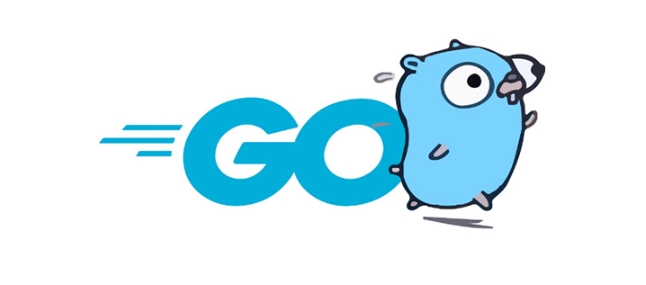What are build constraints (build tags) in Go?
Aug 01, 2025 am 06:18 AMBuild constraints in Go are special comments that control file inclusion during compilation based on conditions like platform, architecture, or custom tags; they appear as //go:build condition before the package declaration and support logical operators (&&, ||, !) for complex expressions. 1. They enable platform-specific code, such as using //go:build linux for Linux-only files. 2. They allow targeting specific architectures, like //go:build arm64 for ARM64 systems. 3. Custom tags support build modes, where go build -tags experimental includes files with //go:build experimental. The new //go:build syntax (Go 1.17 ) is preferred over the old // build style, though both can coexist for compatibility. Go evaluates these tags alongside implicit ones (GOOS, GOARCH, cgo), and tools like go list -f '{{.GoFiles}}' -tags experimental help inspect included files, giving precise control over conditional compilation in a clean, maintainable way.

Build constraints, also known as build tags, are special comments in Go source files that control when a file should be included in a build. They’re a way to conditionally compile code based on environment, platform, architecture, or custom conditions—without changing the code structure.

They look like comments at the top of a Go file (before the package declaration), but Go’s toolchain interprets them as directives.
Syntax and Placement
A build tag looks like this:

//go:build condition
Note: There's no space between
//andgo:build. This is important.
It must appear before the package statement, typically near the top of the file. You can have multiple build tags, but usually one is enough.

Example:
//go:build linux package main // This file will only be compiled when building on Linux.
You can also combine conditions:
Or use logical OR:
Negation is supported too:
This means: include this file unless building for Windows.
Common Use Cases
1. Platform-Specific Code
You might have different implementations for different operating systems.
server_linux.go→//go:build linuxserver_darwin.go→//go:build darwinserver_windows.go→//go:build windows
Go will only include the appropriate file based on the target OS.
2. Architecture Constraints
You can target specific CPU architectures:
Useful when using assembly or low-level optimizations.
3. Build Modes (Dev vs Prod)
You can define custom tags for features like debug mode or experimental features.
Then build with:
go build -tags experimental
This includes only files that have //go:build experimental (or combine with others).
You can also define multiple tags:
go build -tags "dev debug"
And in code:
Old vs New Style
There are two styles of build constraints:
Old style (still supported):
// build linux
New style (Go 1.17 recommended):
The
//go:buildsyntax is more consistent with other Go directives and supports proper boolean expressions.
Even if you use the new style, it’s common to include the old-style comment for backward compatibility with older tools:
//go:build linux // build linux
But for new projects, just use //go:build.
How Go Evaluates Build Tags
When you run go build, the toolchain checks all build tags across files and includes only those that match the current build environment and any -tags provided.
By default, Go sets implicit tags like:
GOOS(e.g.,linux,darwin,windows)GOARCH(e.g.,amd64,arm64)cgo(if cgo is enabled)
So you can write:
And it will compile on Linux, FreeBSD, etc., but not macOS or Windows.
Practical Tips
- Use descriptive filenames (e.g.,
config_linux.go,util_test.go) to make it clear which files are constrained. - Avoid overusing custom tags—keep builds predictable.
- Test with different tag combinations if you maintain cross-platform code.
- Use
go listto see which files are included:
go list -f '{{.GoFiles}}' -tags experimentalBasically, build constraints give you fine-grained control over what code gets compiled, letting Go act like a multi-platform language without messy preprocessor macros. They’re simple, powerful, and widely used in real-world Go projects.
The above is the detailed content of What are build constraints (build tags) in Go?. For more information, please follow other related articles on the PHP Chinese website!

Hot AI Tools

Undress AI Tool
Undress images for free

Undresser.AI Undress
AI-powered app for creating realistic nude photos

AI Clothes Remover
Online AI tool for removing clothes from photos.

Clothoff.io
AI clothes remover

Video Face Swap
Swap faces in any video effortlessly with our completely free AI face swap tool!

Hot Article

Hot Tools

Notepad++7.3.1
Easy-to-use and free code editor

SublimeText3 Chinese version
Chinese version, very easy to use

Zend Studio 13.0.1
Powerful PHP integrated development environment

Dreamweaver CS6
Visual web development tools

SublimeText3 Mac version
God-level code editing software (SublimeText3)
 How does the switch statement work in Go?
Jul 30, 2025 am 05:11 AM
How does the switch statement work in Go?
Jul 30, 2025 am 05:11 AM
Go's switch statement will not be executed throughout the process by default and will automatically exit after matching the first condition. 1. Switch starts with a keyword and can carry one or no value; 2. Case matches from top to bottom in order, only the first match is run; 3. Multiple conditions can be listed by commas to match the same case; 4. There is no need to manually add break, but can be forced through; 5.default is used for unmatched cases, usually placed at the end.
 how to break from a nested loop in go
Jul 29, 2025 am 01:58 AM
how to break from a nested loop in go
Jul 29, 2025 am 01:58 AM
In Go, to break out of nested loops, you should use labeled break statements or return through functions; 1. Use labeled break: Place the tag before the outer loop, such as OuterLoop:for{...}, use breakOuterLoop in the inner loop to directly exit the outer loop; 2. Put the nested loop into the function, and return in advance when the conditions are met, thereby terminating all loops; 3. Avoid using flag variables or goto, the former is lengthy and easy to make mistakes, and the latter is not recommended; the correct way is that the tag must be before the loop rather than after it, which is the idiomatic way to break out of multi-layer loops in Go.
 Using the Context Package in Go for Cancellation and Timeouts
Jul 29, 2025 am 04:08 AM
Using the Context Package in Go for Cancellation and Timeouts
Jul 29, 2025 am 04:08 AM
Usecontexttopropagatecancellationanddeadlinesacrossgoroutines,enablingcooperativecancellationinHTTPservers,backgroundtasks,andchainedcalls.2.Withcontext.WithCancel(),createacancellablecontextandcallcancel()tosignaltermination,alwaysdeferringcancel()t
 Building Performant Go Clients for Third-Party APIs
Jul 30, 2025 am 01:09 AM
Building Performant Go Clients for Third-Party APIs
Jul 30, 2025 am 01:09 AM
Use a dedicated and reasonably configured HTTP client to set timeout and connection pools to improve performance and resource utilization; 2. Implement a retry mechanism with exponential backoff and jitter, only retry for 5xx, network errors and 429 status codes, and comply with Retry-After headers; 3. Use caches for static data such as user information (such as sync.Map or Redis), set reasonable TTL to avoid repeated requests; 4. Use semaphore or rate.Limiter to limit concurrency and request rates to prevent current limit or blocking; 5. Encapsulate the API as an interface to facilitate testing, mocking, and adding logs, tracking and other middleware; 6. Monitor request duration, error rate, status code and retry times through structured logs and indicators, combined with Op
 how to properly copy a slice in go
Jul 30, 2025 am 01:28 AM
how to properly copy a slice in go
Jul 30, 2025 am 01:28 AM
To correctly copy slices in Go, you must create a new underlying array instead of directly assigning values; 1. Use make and copy functions: dst:=make([]T,len(src));copy(dst,src); 2. Use append and nil slices: dst:=append([]T(nil),src...); both methods can realize element-level copying, avoid sharing the underlying array, and ensure that modifications do not affect each other. Direct assignment of dst=src will cause both to refer to the same array and are not real copying.
 Working with Time and Dates in Go
Jul 30, 2025 am 02:51 AM
Working with Time and Dates in Go
Jul 30, 2025 am 02:51 AM
Go uses time.Time structure to process dates and times, 1. Format and parse the reference time "2006-01-0215:04:05" corresponding to "MonJan215:04:05MST2006", 2. Use time.Date(year, month, day, hour, min, sec, nsec, loc) to create the date and specify the time zone such as time.UTC, 3. Time zone processing uses time.LoadLocation to load the position and use time.ParseInLocation to parse the time with time zone, 4. Time operation uses Add, AddDate and Sub methods to add and subtract and calculate the interval.
 How to use template.ParseFS with go embed?
Jul 30, 2025 am 12:35 AM
How to use template.ParseFS with go embed?
Jul 30, 2025 am 12:35 AM
Use the template.ParseFS and embed package to compile HTML templates into binary files. 1. Import the embed package and embed the template file into the embed.FS variable with //go:embedtemplates/.html; 2. Call template.Must(template.ParseFS(templateFS,"templates/.html")))) to parse all matching template files; 3. Render the specified in the HTTP processor through tmpl.ExecuteTemplate(w,"home.html", nil)
 How to import a local package in Go?
Jul 30, 2025 am 04:47 AM
How to import a local package in Go?
Jul 30, 2025 am 04:47 AM
To import local packages correctly, you need to use the Go module and follow the principle of matching directory structure with import paths. 1. Use gomodinit to initialize the module, such as gomodinitexample.com/myproject; 2. Place the local package in a subdirectory, such as mypkg/utils.go, and the package is declared as packagemypkg; 3. Import it in main.go through the full module path, such as import "example.com/myproject/mypkg"; 4. Avoid relative import, path mismatch or naming conflicts; 5. Use replace directive for packages outside the module. Just make sure the module is initialized






